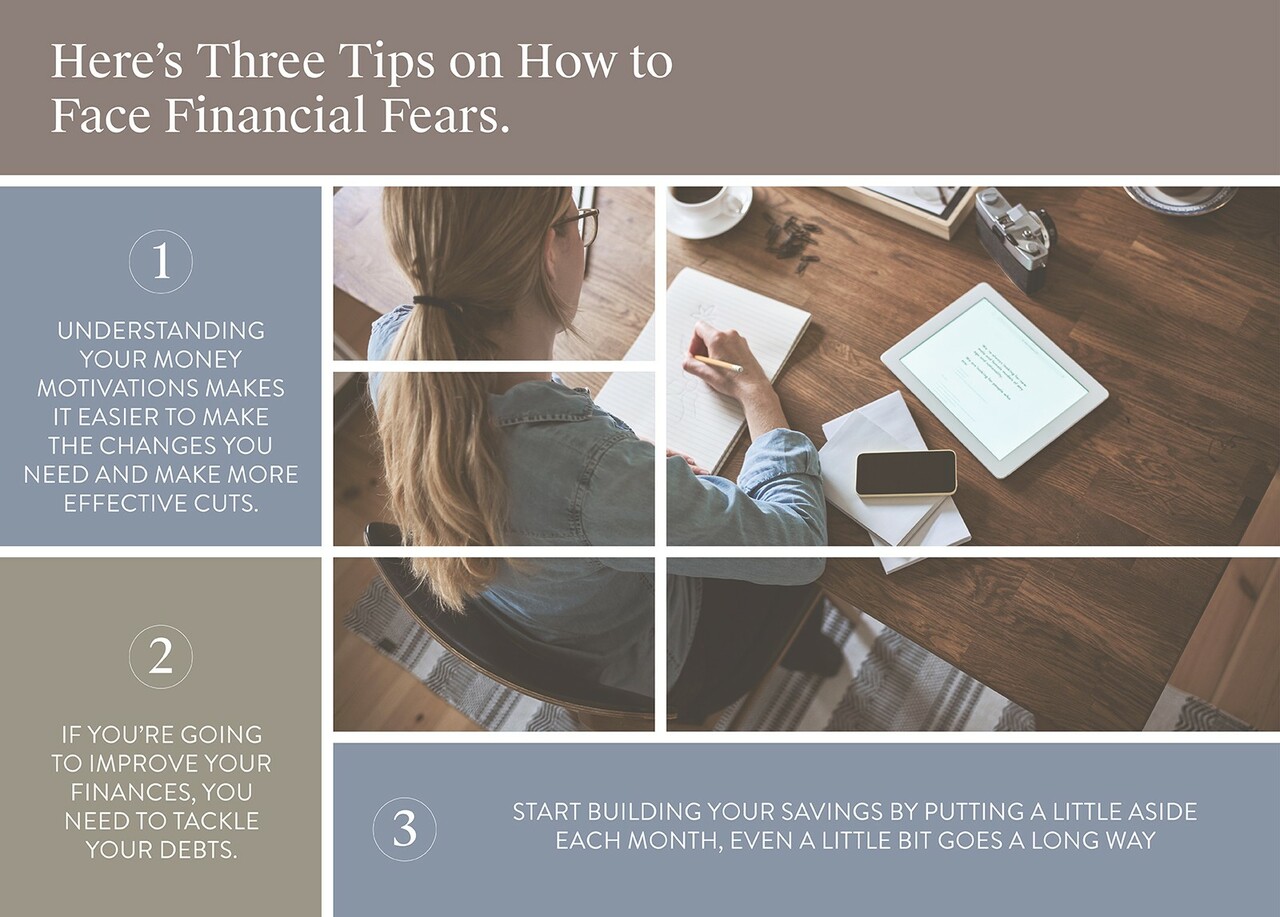Face your financial fears with a smart savings plan
by Mark Polatkesen, General Manager - Mortgage Domayne

Tackling your finances can be a daunting prospect, but it doesn’t have to be. With a few simple steps, you can address your loans, debts, bills, and savings head-on.
We all have our fears. Spiders, heights, the dark…but the scariest one of all tends to be our personal finances.
There’s no denying that finance can feel scary. It’s tempting to ignore things like unpaid bills, parking fines and personal debt in the hope that they’ll just go away. But we all know that when you’re afraid of the dark, the best approach is to turn on the light. The same goes for your finances.

By following these simple steps, you can address your loans, debts, bills, and savings head-on.
Here’s how to face your financial fears.
1. Understand what money means to you
Like food, money carries emotional and psychological weight. How we spend or save, what we choose to use our money on, and how we set goals, are all part of our ‘money story.’ Understanding this story is key to making sense of your finances.
Perhaps you’re someone who values experiences over possessions. Alternatively, having a collection of things around you might bring you comfort. Some of us stock the pantry to overflowing when we feel apprehensive about the future; others cut back to bare bones and squirrel cash into savings. You might even feel uncomfortable with the idea of having money, and unconsciously try to ‘get rid of it’ as fast as you earn it.
Understanding your motivations makes it much easier to make the changes you need. By zeroing in on the things that really matter to you, you can make more effective cuts. For example, if it’s important to you to be a generous host, can you switch to low-cost picnic events rather than cut out hosting altogether? If shopping is a fun stress-reliever, perhaps you can get smart with op shops and hunt out some bargains.
This exercise may also help you set your financial goals. What do you want the next chapter of your money story to look like? Set a goal to get there quicker.

Try and put a little aside each month, and your peace of mind will grow alongside your bank balance.
2. Tackle your debts
If you’re going to improve your finances, you need to tackle your debts. It’s all too easy to sign up for ongoing subscriptions, buy things on AfterPay or take out a personal loan. Due to the set-and-forget nature of most debts, you may be surprised at how many you have.
However, not all debt is created equal. Debts that you take out to buy an appreciating asset (an asset that gains in value over time, like a house) are considered ‘good debt’. Debts that you take out to buy a depreciating asset (one that loses value, like the latest iPhone) are not so good. Any debt which is growing, which commonly happens when your repayments are less than the interest being added to the debt, is an emergency.
If you’re going to tackle a debt problem, you should try and pay off the bad debts first. One famous approach is the ‘snowball method’. Identify the debt with the highest interest rate (this will be on your loan documentation or statements) and throw as much money as possible towards the balance while making minimum repayments on the others. Once that first debt is gone, move on to the second highest, and so on.
3. Build an emergency fund
Once the bad debts are gone, you can start building your savings. You don’t need to worry about paying off the good debts for now, as long as you’re making your required repayments.
An emergency fund is there to cover those unexpected things, like your car breaking down or a period of unemployment. Some experts will tell you to save 3-6 months of income, but if that feels unmanageable, remember that even a little helps.
Try and put a little aside each month, and your peace of mind will grow alongside your bank balance.
If a dream house and land package is your goal, call Carlisle Homes on 1300 328 045. One of our in-house construction finance specialists can help you run the numbers, so you feel confident about your buying budget.

Mark Polatkesen
General Manager - Mortgage Domayne
With over two decades of experience in the finance industry, Mark Polatkesen leads Mortgage Domayne, one of Australia’s largest construction-focused mortgage brokerages.
Read more